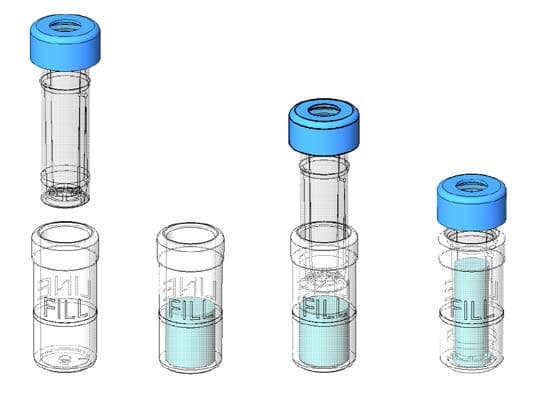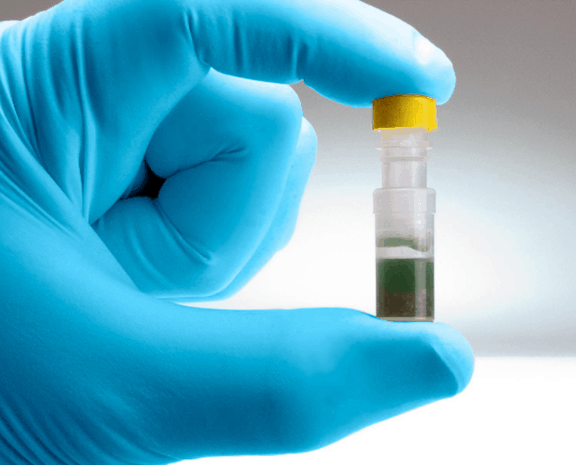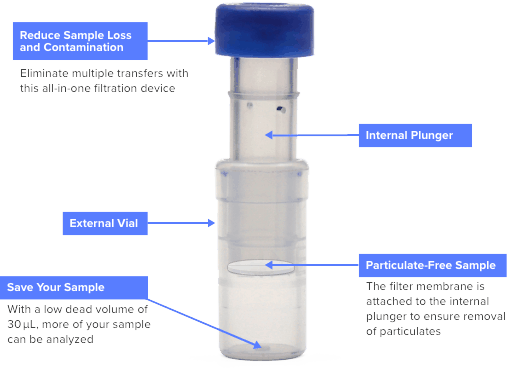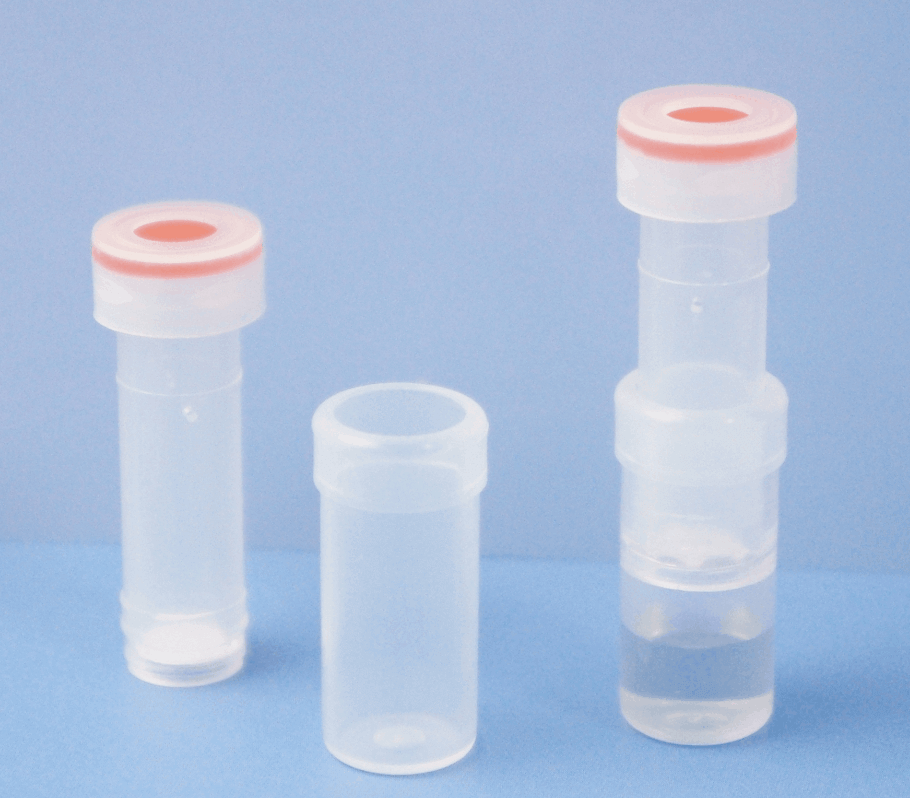







Autosampler Vial Crimpers and Decappers Autosampler Vials, Caps, and Closures Chromatography and Mass Spectrometry Reagents Chromatography Columns and Cartridges Chromatography Syringes Chromatography Water Gases and Gas Accessories Paper Chromatography Products Solid Phase Extraction Products TLC Products Chemicals Chemicals Acids
Sample Preparation by Filtration. Filtration is a separation technique used to concentrate or purify substances based on their physical or chemical properties. It is a simple and routine method used in many laboratories to remove insoluble particles from solutions and to prepare samples for analysis. Filtration is used to reduce sample
Thomson eXtreme/FV® Filter Vials offer tiered filtration, and are designed to speed up sample prep and analysis on particulate laden samples. Save on costly repairs and service issues while eliminating multiple syringe filters, syringes, HPLC vials, and HPLC caps. The eXtreme/FV® Filter Vials are easy to press down with hands or toggle press.
Similar to how a french press (cafetière à piston) works, Filter Vials filter particulates out of the sample with similar membranes used in syringe filters. The pressing of the plunger into the shell vial forces the sample up through a filter to separate the particulates from the sample to be analyzed. Thomson has several filter membranes and pore sizes to choose from making the Filter Vial a versatile tool in the lab.
Thomson's filter vial line is a proven indispensable tool for sample prep and analysis for all types of HPLC, GC, LC-MS, GC-MS and lateral flow analyses. Whether testing pharmaceuticals, toxicology or other areas, filter vials allow you to go from unfiltered samples to filtered samples in 15 seconds. More About Filter Vials General Info
Easy-to-use vials offer fast sample filtration and require only a squeeze of your fingers. Minimize sample loss by eliminating multiple transfers. Color-coded caps allow easy identification of 0.2 μm or 0.45 μm membranes in PVDF, PTFE, PES, or nylon. Preslit PTFE/silicone caps help eliminate broken autosampler needles and cored septa.
Filter Vials provide pre-analytical sample filtration that improves your signal-to-noise ratio and extends column life while minimizing plastic waste Plates designed for sample preparation and storage applications, or both small scale pilot projects and high throughput sample analysis Empty Columns
Ultra-low dead volume allows you to filter as little as 10 μL of sample and still obtain enough filtrate to make a 2 μL injection. Easy-to-use vials offer fast sample filtration and require only a squeeze of your fingers. Color-coded caps allow easy identification of 0.2 μm or 0.45 μm membranes in PVDF, PTFE, PES, or nylon.
Recommended for samples containing less than 10% solid particulates, these standard filter vials are constructed using PTFE or PES for long-lasting durability.Available in a variety of filter media, syringeless filters allow you to process sample loads in a fraction of the time, providing a quick, economical, and environmentally conservative way to filter samples prior to HPLC analysis.
Thomson eXtreme|FV® offer multi-layer filtration for viscous samples and samples containing up to 30% particulates. eXtreme|FV® allows for compounds to be separated from the matrix, which results in both a higher signal-to-noise ratio and peaks that are more differentiated. replace SPE steps with eXtreme|FV®
Thomson Filter Vials are a single system which replaces HPLC Vials, HPLC Caps, Syringes, & Syringe Filters for the filtration of samples. In 15 seconds, Thomson Filter Vials allow for sample preparation of unfiltered samples to filtered samples in an autosampler-ready vial. Key Features
Certified 0.22um hplc filter vials with pre-slit cap thomson . Home » News » Filter Vials » Certified 0.22um hplc filter vials with pre-slit cap thomson 9mm 2ml Screw Neck HPLC Autosampler Vial - hplcvials.com Item No: Aijiren hplc filter vials for sale Vial Size: 12 x 32 mm Pore Size: 0.22um and 0.45um Capacity: Unfiltered sample chamber: 500 µL Filtered sample chamber: 330 µL Maximum
Filter Vials Thomson Filter Vials No multiple step transfers needed. Pre-slit caps for all our filter vials for sale, with the exception of the low evaporation caps, ensure a no-hassle, clean aliquot withdrawal. No more breakage of expensive needles or coring problems on the HPLC or Mass Spectrometer.
The filter vial consists of two parts: a filter vial shell and a plunger which includes a single layer filter on one end and a vial cap on the other end. Applications for Standard Filter Vials include filtration of catalysts from organic and medicinal chemistry synthesis reactions, saccharide analysis in corn syrup, and in-vial protein
All Thomson Filter Vials will fit into any standard sized machine or tray. Thomson's filter vial line is a proven indispensable tool for sample prep and analysis for all types of HPLC, GC, LC-MS, GC-MS and lateral flow analyses. Thomson filter vials allow you to go from unfiltered samples to filtered samples in 15 seconds.